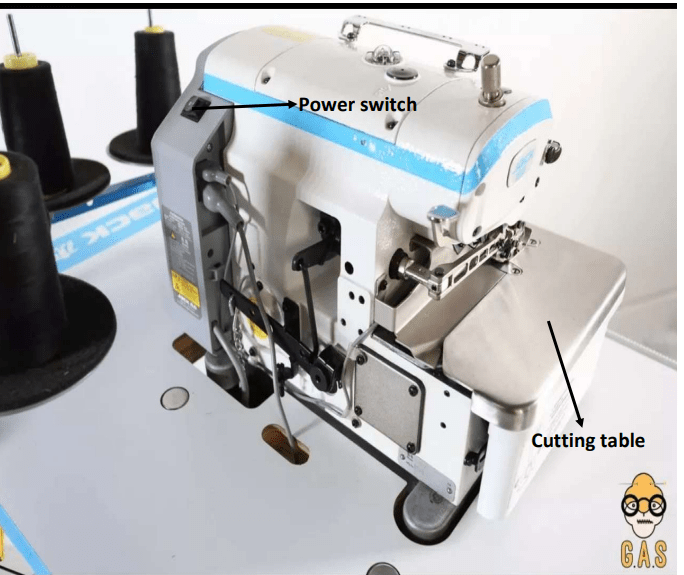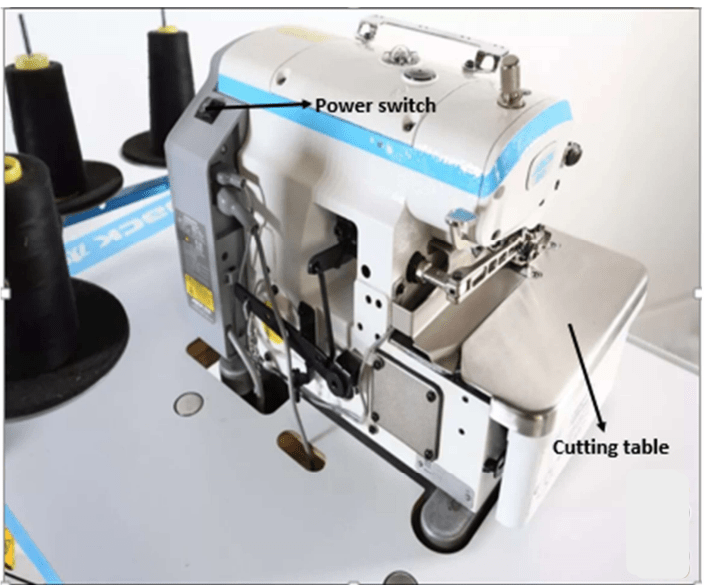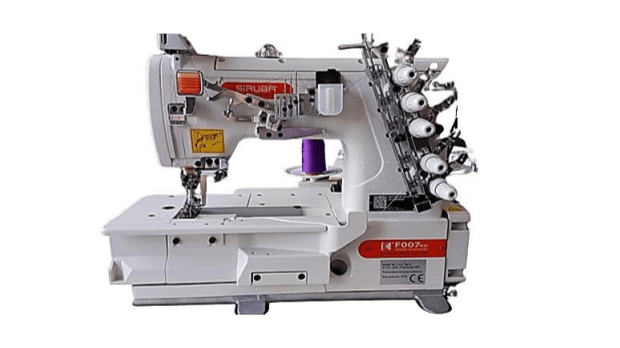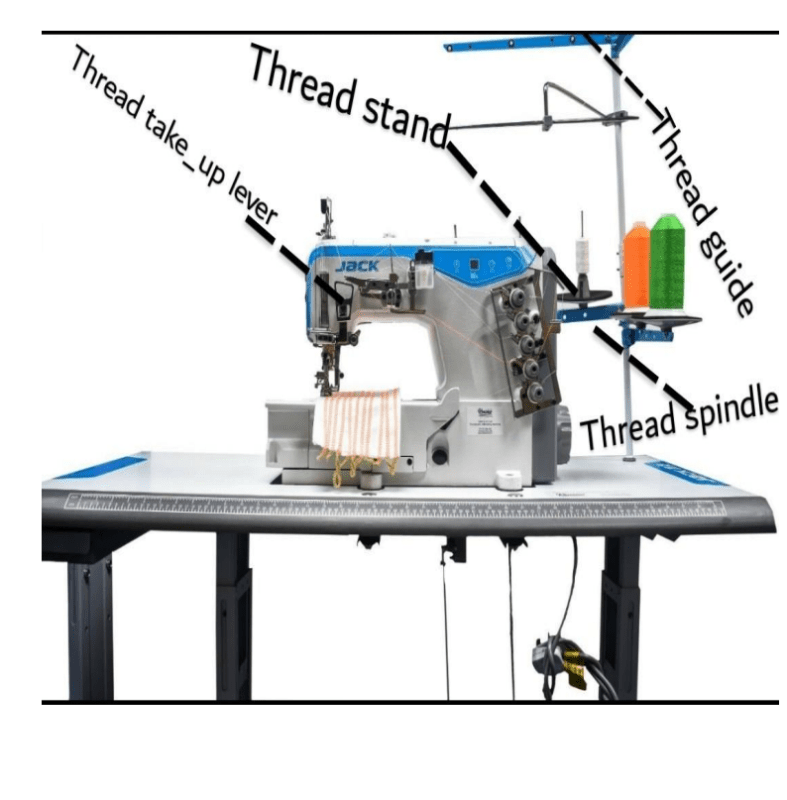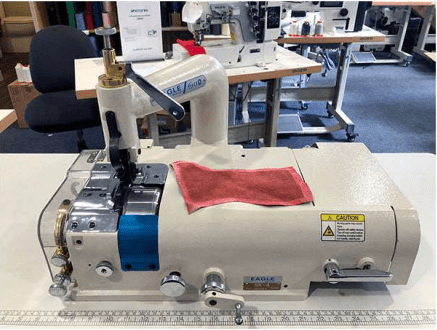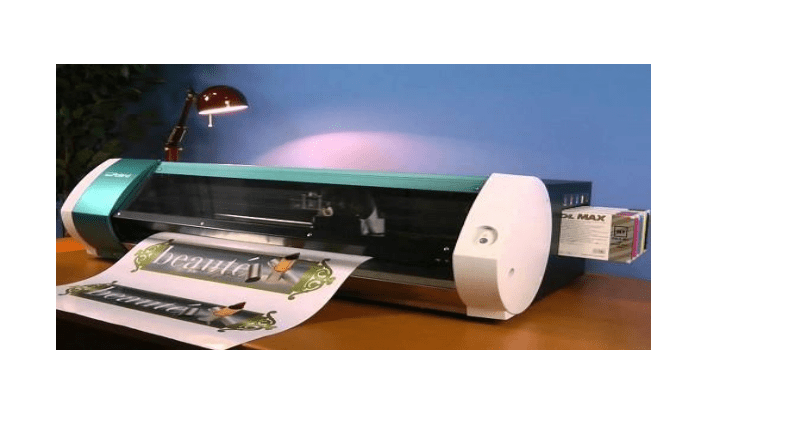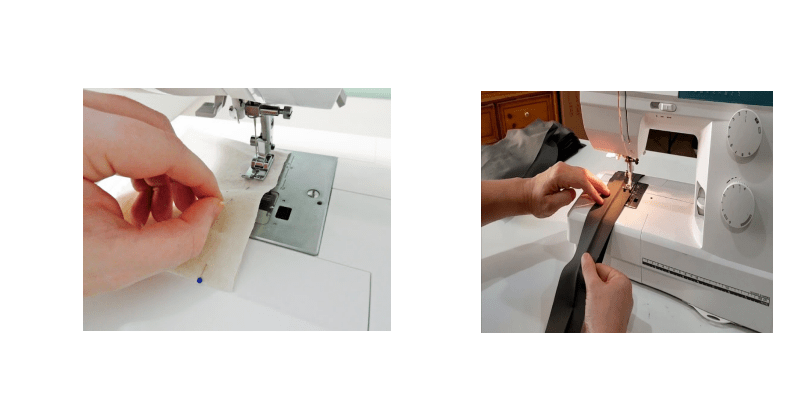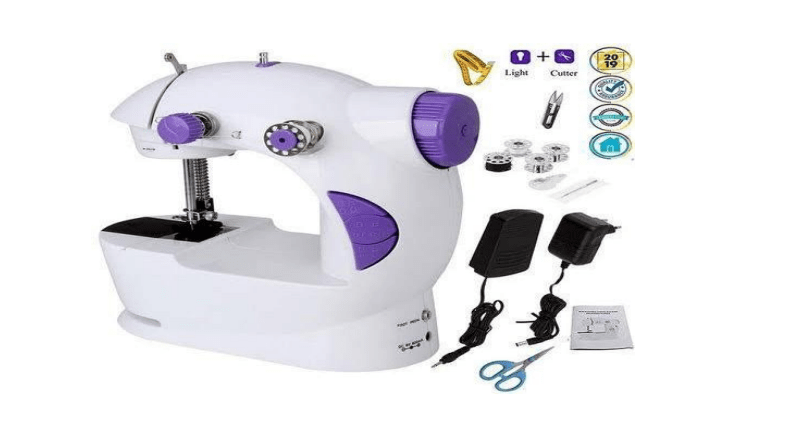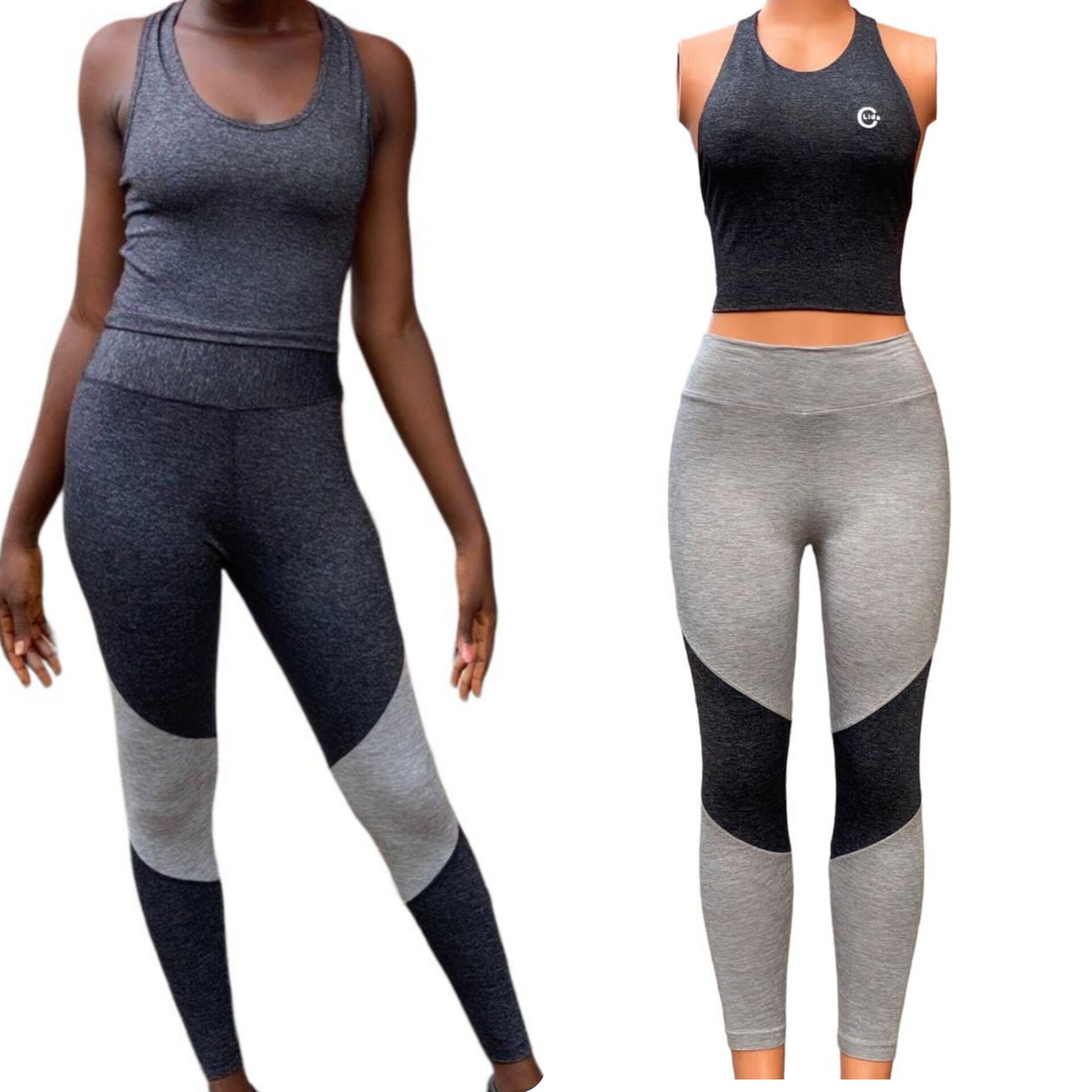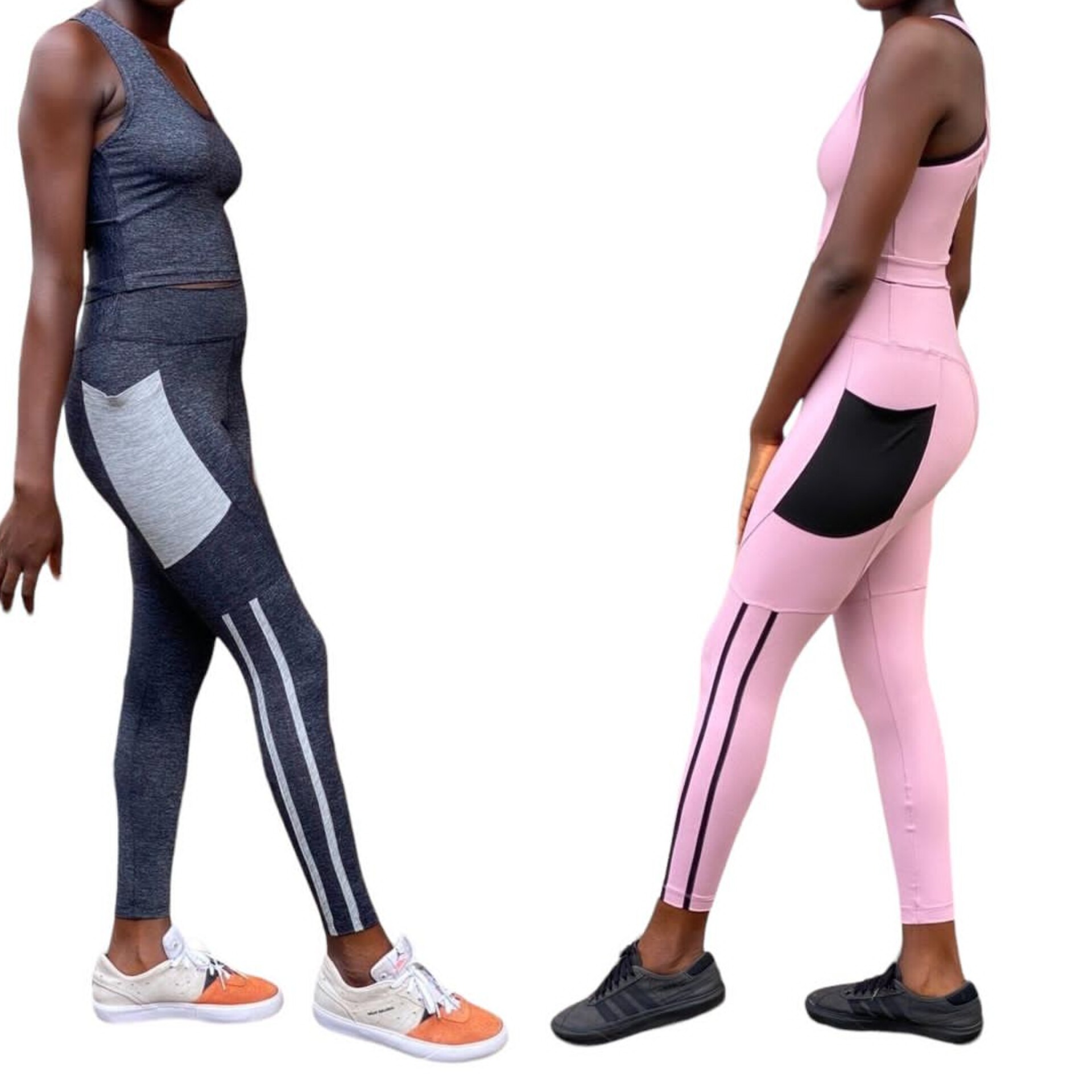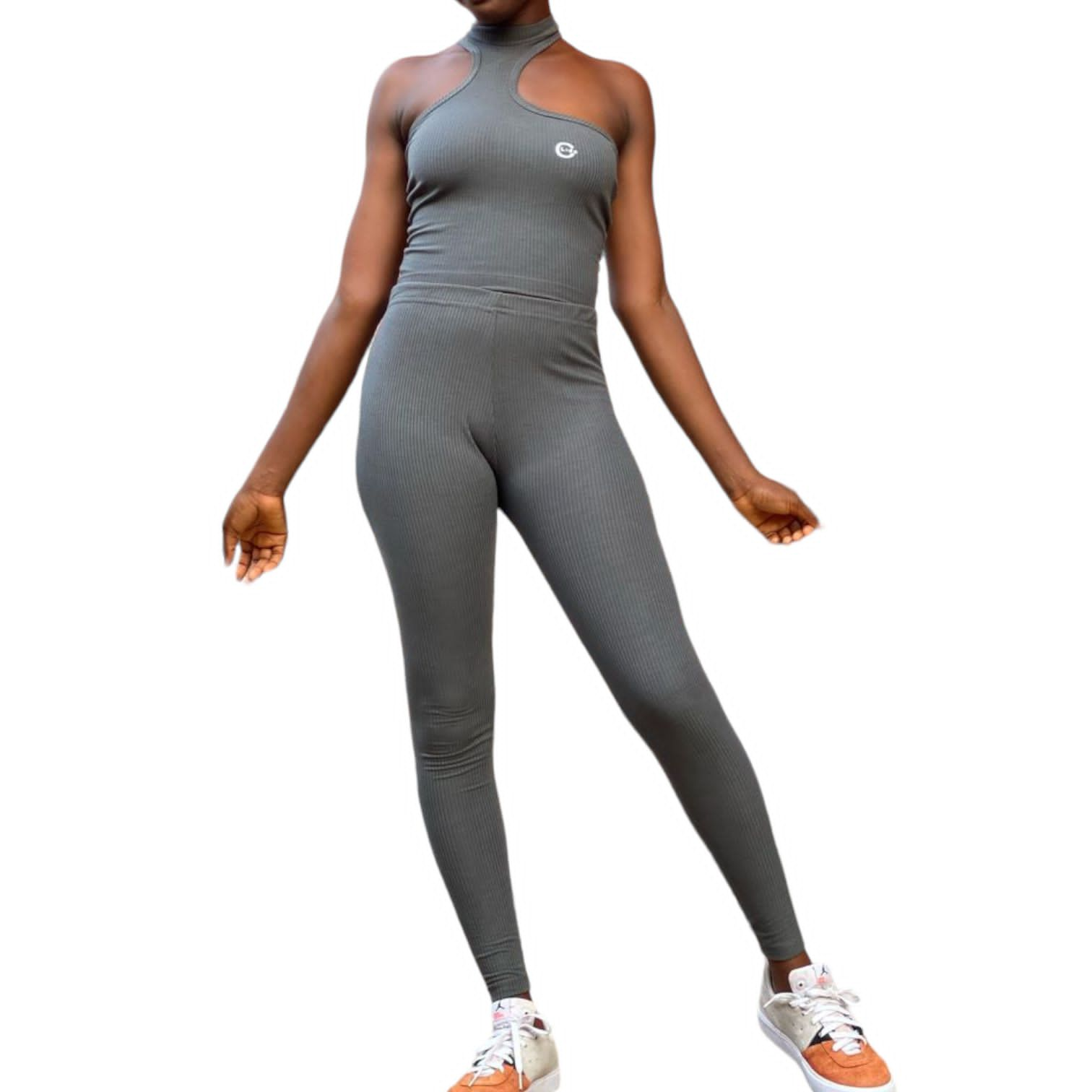20 minute read up!
let start with introduction
In the late 19th century, the concept of overlock
stitching emerged as a solution to prevent fabric
edges from fraying, initially overlocking was done
manually using specialized hand-operated
machines, The first industrial overlocking machines
appeared in the early 20th century, these machines
utilized two threads to create the overlock stitch.
Over the years, the 4-thread overlocking machine
has undergone continuous refinement and
improvement, where modern models feature
advanced technology, such as computerized
controls, automatic thread tensioning, and
programmable stitch patterns, further enhancing
their performance and versatility.
The 4-thread overlocking industrial machine is a
powerhouse in the realm of garment manufacturing
and textile production, Its versatility, speed, and
efficiency make it a very important tool for creating
professional-quality seams, finishing edges, and
adding decorative touches to a wide range of
fabrics.
In this manuscript, we will explore the definition,
components, uses and benefits, maintenance
practices, and safety precautions associated with
the 4-thread overlocking industrial machine.
The 4-Thread Overclock Sewing Machine is a
high-performance sewing unit that uses four
threads to stitch simultaneously, resulting in
enhanced productivity and precision.
This machine is designed to handle demanding
applications, such as highly complicated fabric
sewing, embroidery, and quilting, with efficiency,
the machine is widely also known as the serger.
Overlocking itself refers to the process of
increasing a machine’s performance beyond its
manufacturer-recommended specifications,
achieving improved productivity and speed.
The 4-Thread Overclock Sewing Machine takes
this concept to the next level by incorporating four
threads, allowing for quadruple the sewing speed of
a standard of normal sewing machine meaning the
4 thread overlocking machine is a machine that
incorporates 4-thread into increasing the speed and
productivity all while utilizing four threads to create
an overlock stitch that encases the raw edges of
fabric, preventing fraying and providing a clean,
professional finish.
A well-detailed diagram of the 4-
thread overlocking machine
Rear view

Front view
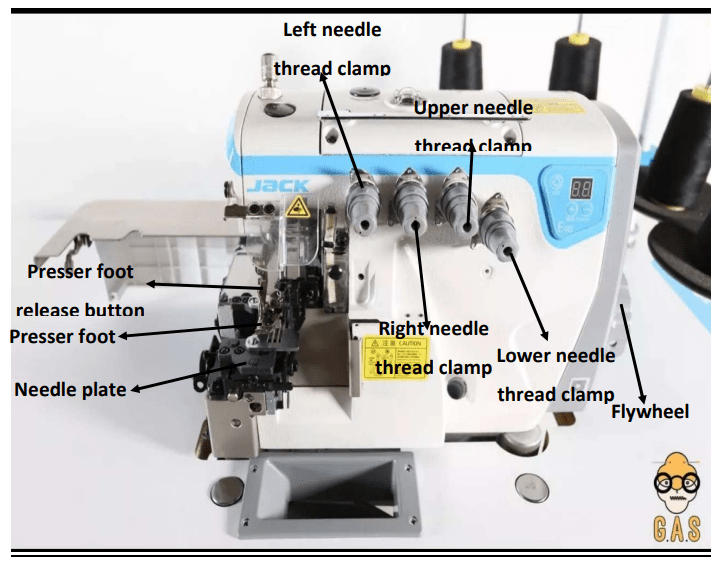
A well-labeled diagram of the 4 thread
overlocking machine with the top, rear, and side
view is given below to help give a full grasp of the
structure, components, and mechanism of the
machine.
1.Presser Foot: The presser foot is a critical
component of the industrial 4-thread overlocking
machine, where Its primary function is to hold the
fabric firmly in place while it is being stitched,
ensuring smooth and precise stitching results.

Image of the presser foot component of the
4thread overlocking machine.
The presser foot component applies downward
pressure on the fabric, preventing it from shifting
as it moves under the needle, which ensures that
the stitches are formed accurately and
consistently.
2.Presser foot release button: This is the
component of the 4-thread overlocking machine
that is very close to the presser foot because its
main function is to control the movement of the
presser foot during the garment-making process.
3.Needle plate: In the 4-thread overlock machine,
the needle plate plays a crucial role in facilitating
the stitching process and ensuring the smooth
operation of the machine.
The needle plate is equipped with needle slots
or holes that guide the needles into precise
positions as they penetrate the fabric, and these
slots are aligned with the loopers and knives of
the overlock machine to ensure proper stitch
formation and seam trimming and since the
needle plate is made up of durable material it
prevents needle breakage during the sewing
process.
4.Flywheel: The flywheel is a component of the 4-
thread overlocking machine that holds the
responsibility of powering the machine and
regulating stitching speed.
The flywheel is connected to the main shaft of
the sewing machine, which is typically driven by a
motor or a manual mechanism, and as the main
shaft rotates, it transmits rotational energy to the
flywheel, causing it to spin and power the
machine itself.
5.Left, Right, Upper, and Lower needle thread
clamp: These are components of the machine
that regulate the proper tension control of the
threads passing through the machine to ensure
balanced stitches and prevent thread breakage.
6.Cutting table: The cutting table, also known as
the cutting blade or knife, is a crucial component
of the 4-thread overlocking machine, its primary
function is to trim excess fabric from the edges of
the material being sewn, ensuring clean and
uniform seam finishes.
The cutting table is positioned directly in front
of the needles, allowing it to trim the fabric edges
simultaneously by trimming the fabric edges, the
cutting table helps clean up rough or uneven
edges, ensuring a neat and professional
appearance for the finished seam.
7.Power Switch: This is the component of the 4-
thread overlocking machine that terminates and
initiates all activities done by the 4-thread
overlocking machine.
Uses of the 4-thread overlocking
Machine
The 4-thread overlocking machine is a versatile
and important tool in both home and industrial
sewing which is particularly valued for its ability
to create durable, professional-quality seams and
finishes.
Here’s a detailed explanation on the specific
uses of the 4-thread overlocking machine:
1.Seam finishing: The 4-thread overlocking machine
prevents fraying in a fabric through the process of
finishing seams on pieces of fabrics or textiles.
The 4-thread overlocking machine produces
neat, clean edges that give garments and other
textile products a professional finish for the sake
of a more visually appealing design.

This is an image
of the 4-thread overlocking machine producing
seams and nice finishing.
2.Joining fabrics: The machine is also capable of
joining multiple layers of fabric together while
finishing the edges, making it suitable for heavy duty projects like outfits.
Thereby, solving the problem of effectively
joining fabrics of varying weights and types,
ensuring versatile application in different
projects.
3.Hemming: Utilizing the 4 threads available the
machine can create narrow, rolled hems, which
are perfect for lightweight fabrics like chiffon and
silk.
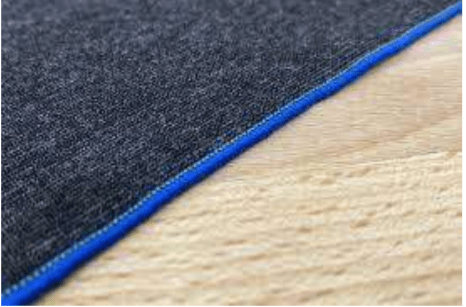
A neatly
done hem finishing for a garment.
The machine even goes as far as to produce
blind hems, which are less visible and ideal for
professional garment finishing.
4.Elastic and lace attachments: Attachment of
elastic to garments, such as waistbands, cuffs, and
lingerie has been made easier and possible since
the development of the 4-thread overlocking
machine in the fabric industry.
Efficiently attaching lace to fabric edges, which
is useful in lingerie, children’s wear, and
decorative home textiles is another essential
usage of the machine.
5.Decorative Stitching: The overlocking machine
can create decorative edges and trims, adding
aesthetic value to garments and home decor
items.
Also, using different colored threads can add a
decorative touch to seams and edges.
Benefits of the 4-thread
overlocking Machine
The benefits of the 4-thread overlocking
machine has involved various factors of fine
finishing edges of garments and other materials in
the textile industry.
These benefits are well listed and explained in
detail below:
1.Efficiency and productivity: In the textile industry
the 4-thread overlocking machine has greatly had
an impact on the efficiency and productivity by
increasing the sewing speed compared to the
traditional sewing machines which can’t keep up
with the machine’s production speed.
The machine sews and trims fabric edges
simultaneously, reducing the need for additional
finishing steps, thereby saving time and being
more efficient to the users.
2.Cost-effectiveness: By the sewing process, the
overlocking machine reduces the labor required
to finish garments, thereby lowering production
costs.
Precision cutting and stitching minimize fabric
waste, contributing to cost savings in the textile
industry as a whole.
3.Versatility in production: The application of the
machine has a very wide range from its uses on
delicate materials like silks to heavy fabrics like
denims.
The 4 thread overlocking machine’s
involvement in production also cuts across the
usage in the production of apparels, home textiles
(kitchen napkin, chair cover) and so on.
4.Fabric durability: The 4-thread stitch provides
added strength and durability, making it ideal for
garments that require robust seams, such as sport
wears.
5.Reduced maintenance: Many industrial models
come with automatic lubrication systems,
reducing downtime for maintenance.
The machine contains durable components
designed with heavy-duty components that
withstand the rigors of industrial use, ensuring
long-lasting performance.
Maintenance of the 4-thread
Overlocking Machine
Maintaining a 4-thread overlocking machine is
crucial for ensuring its optimal performance,
longevity, and the quality of the finished products.
This maintenance practices involves the following
listed below:
1.Regular cleaning: The machine requires either a
daily cleaning routine which involves using a
small brush to remove lint, dust, and thread
scraps from the machine, especially around the
loopers, needles, and under the needle plate.
A weekly cleaning routine which involves
delicately disassembling each part to get to
every hidden spot because accumulated lint or
dust particles can cause the machine to jam and
affect stitch quality is also advised.
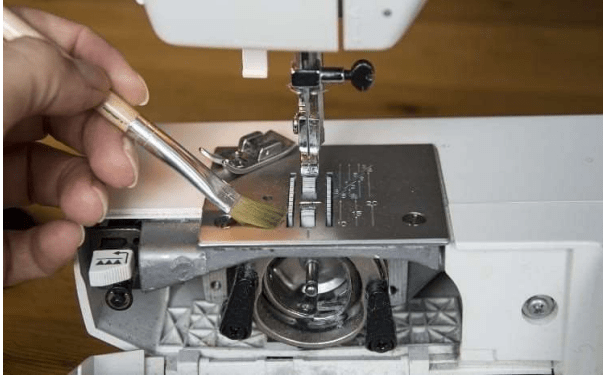
This is an image of a brush being used to
clean the components of the machine.
2.Lubrication of moving parts: Constantly
lubricating moving parts of the machine helps
to prevent wear and tear between components
of the machine.
To lubricate the moving parts of the machine
it is essential to know the appropriate lubricant
for the machine, then ensure to lubricate the
loopers and other moving parts adequately to
ensure smooth operation.
3.Needle maintenance: It is vital to inspect
needles for cases of bends or dullness and in
case of any damage needles should be replaced
because damaged needles tend to skip stitches
and sometimes damage fabrics.
Needles should also be replaced after they
must have been used in any major project of up
to 8-10hrs.
4.Placement and adjustment of components:
The various components of the machine need
to be inspected and adjusted in a case of
misalignment of these components.
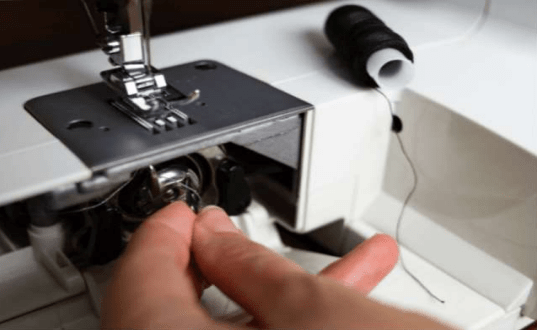
The image above displays the alignment of a
specific part of the machine.
5.Software and firmware updates: A good
maintenance practice is to ensure that the
digital components of the machine is up to date
to maintain optimal functionality.
6.Professional servicing: This maintenance
practice is done not on a daily and weekly
routine but on a longer time limit because it
involves a technician performing detailed
inspections, adjustments, and repairs that are
beyond routine maintenance on the machine.
Safety Precautions to be taken while
using the 4-thread overlocking
machine
These safety precautions should be taken to
ensure the safety of the users of the machine which
are:
1.Wearing protective googles: These involves to
making sure everyone working on any material
with the machine wears safety materials like
the safety glasses to avoid flying dirt or textile
particles or even broken needles.
This measure also involves some dressings
are avoided while in the workplace, things like
loose clothing, excess accessories, or overly
long hair to prevent it from being stuck in the
machine.
2.Proper workplace setup: This safety precaution
helps to put everyone in the workplace space by
providing a danger free working space which
involves good lightning, stable surface for the
machine, and a cluster free workspace to avoid
accidents while working.
3.Handling fabric and feeding in the right way:
This involves using your hands to gently guide
the fabric through the machine, keeping your
fingers at a safe distance from the needle and
cutting blades.
Also, avoid forcing the fabric through the
machine Avoid forcing the fabric through the
machine to prevent need le breakage and fabric
damage.
4.Electrical safety: This is an essential part of
being safe while handling the machine because
it involves regularly checking the power cord
and plug for any signs of damage and not using
the machine if the cord is burnt or the plug is
damaged.
Turning off the machine during electrical
storms or power surges to prevent damage is
also an important aspect of electrical safety.
5.Emergency provisions: Being prepared for a
case of accident while using the machine is also
a safety precaution because it ensures the
safety of the injured victim during the accident.
This is mainly knowing the machine’s
emergency stop function and knowing how to
quickly turn off the machine in case of an
emergency and also a first aid kit must be
nearby at all times for injured victims.
Summary:
In this manuscript, we learnt that overclocking
refers to the process of increasing a machine’s
performance beyond its manufacturer recommended specifications, achieving improved
productivity and speed and that the 4-thread
overlocking machine utilizes four threads to
increase productivity and create fine finishes on
fabric materials through hems and seams.
The various impactful uses of the 4-thread
overlocking machine was also explained which
ranges from seam finishes and hemming that
increases the visual depth of every material is used
on through the sophisticated finishes to the lace
and elastic attachments to materials.
We also learnt that the 4-thread overlocking
machine greatly benefits the whole textile industry
through different ways like increased productivity
and efficiency, cost effectiveness and fabric
durability which continue to ensure the
development in the whole textile industry as a
whole.
Lastly, the maintenance and safety precautions
while handling the 4-thread overlocking machine
was also looked which involved lubricating moving
parts, aligning and placement of components,
electrical safety, wearing protective equipment and
knowing the emergency provisions in the
workplace.
Multi-choice Questions
Part A
Using the diagrams below answer questions 1-10 by
naming the components labeled A-J
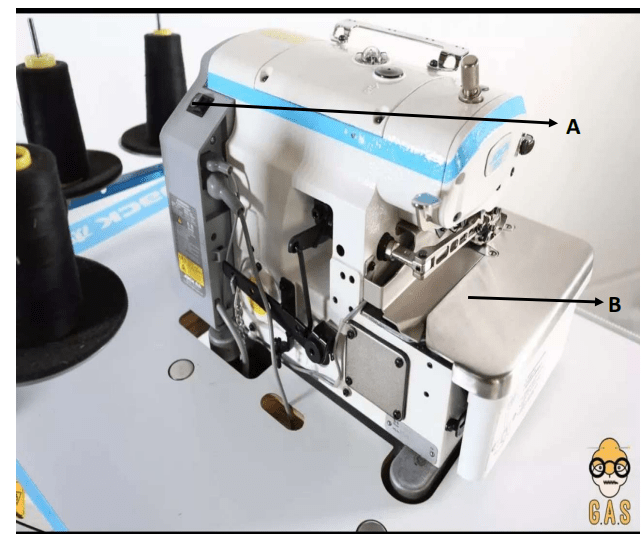

1.The component labeled A is known as _____________
A) Heat Resistant Handle B) Presser Foot C) Cooling Button D) Power Switch
2.The component labeled B is known as ____________
A) Flat board
B) Heating Tube
C) Cutting Table
D) Temperature control Board
3.The component labeled C is known as ______________
A) Left Needle Thread Clamp B) Right Needle Thread Clamp C) Upper Needle Thread Clamp D) Lower Needle Thread Clamp
4.The component labeled D is known as ______________
A) Lower Needle Thread Clamp
B) Left Needle Thread Clamp
C) Upper Needle Thread Clamp
D) Right Needle Thread Clamp
- The component labeled E is known as ____________
A) Left Needle Thread Clamp
B) Upper Needle Thread Clamp
C) Lower Needle Thread Clamp
D) Left Needle Thread Clamp - The component labeled F is known as ____________A) Lower Needle Thread Clamp B) Upper Needle Thread Clamp C) Right Needle Thread Clamp D) Left Needle Thread Clamp
- The component labeled G is known as _____________
A) Flywheel
B) Rotary knob
C) Cooling circle
D) Temperature control - The component labeled H is known as___________
A) Left Needle Thread Clamp
B) Rubber plate
C) Presser foot release button
D) Presser foot
9.The component labeled I is known as_________
A) Presser foot release button
B) Flywheel
C) Cooling button
D) Presser foot
- The component labeled J is known as____________
A) Flywheel
B) Heating Tube
C) Presser foot
D) Needle plate
Part B
Pick the right option in each question to answer the
multi choice questions
- What is the primary function of the presser
foot on a 4-thread overlocking machine?
A) To Cut the Fabric
B) To Hold the Fabric in Place While Stitching
C) To Wind the Bobbin
D) To Control the Thread Tension - The 4-thread overlocking machine is also
known as a:
A) Serger
B) Embroiderer
C) Quilter
D) Overstitcher - The term ‘overlocking’ in the context of
sewing machines refers to:
A) Increasing the Machine’s Speed beyond
Specifications
B) Reducing the Machine’s Noise
C) Reducing the Machine’s Stitch Variety
D) Simplifying the Machine’s Operation - Which part of the machine is checked
regularly to ensure no fraying or damage?
A) Power Cord
B) Thread Spool
C) Needle
D) Flywheel - What should be checked for bends or
dullness to maintain stitch quality?
A) Flywheel
B) Power Cord
C) Needle
D) Cutting Blade - Which component of the 4-thread
overlocking machine is responsible for holding the
Fabric Firmly?
A) Flywheel
B) Needle Plate
C) Presser Foot
D) Thread Clamp - Which of the following is a use of the 4-
thread overlocking machine?
A) Painting
B) Sculpting
C) Hemming
D) Drawing - The 4-thread overlocking machine is
particularly valued for:
A) Creating Intricate Paintings
B) Producing Durable, Professional-Quality Seams
C) Writing Books
D) Baking Cakes - What function does the presser foot release
button serve?
A) Adjusting the Needle Position
B) Controlling he Movement of the Presser Foot
C) Changing the Stitch Pattern
D) Powering the Machine On And Off - What is the primary function of the
flywheel?
A) To Trim Excess Fabric
B) To Power the Machine and Regulate Stitching
Speed
C) To Hold the Fabric in Place
D) To Control Thread Tension - Why should long hair be tied back while
using the machine?
A) To Improve Visibility
B) To Prevent It from Getting Caught in the
Machine
C) To Maintain Hygiene
D) To Stay Cool - What is the role of the needle plate in the 4-
thread overlocking machine?
A) To Power the Machine
B) To Guide Needles into Precise Positions
C) To Hold the Fabric in Place
D) To Control Thread Tension - What practice helps in preventing wear and
tear between the machine’s components?
A) Daily Cleaning
B) Lubrication
C) Needle Replacement
D) Software Updates - Which safety measure involves turning off
the machine during power surges?
A) Electrical Safety
B) Proper Setup
C) Fabric Handling
D) Personal Protective Equipment - How does the 4-thread overlocking machine
contribute to cost-effectiveness in the textile
industry?
A) By Reducing Fabric Variety
B) By Increasing Labor Costs
C) By Reducing the Labor Required to Finish
Garments
D) By Decreasing Production Speed - What should be done before performing any
maintenance tasks on the machine?
A) Increase the Machine’s Speed
B) Turn Off and Unplug the Machine
C) Adjust the Thread Tension
D) Change the Needle - Which type of attachment is made easier by
the 4-thread overlocking machine?
A) Buttons
B) Zippers
C) Elastic and Lace
D) Velcro - What maintenance practice involves
delicately disassembling parts for cleaning?
A) Daily Cleaning
B) Lubrication
C) Weekly Cleaning
D) Professional Servicing - What safety equipment should be worn to
protect eyes while using the machine?
A) Gloves
B) Earplugs
C) Safety Glasses
D) Face Mask - What maintenance practice involves using a
small brush?
A) Lubrication
B) Cleaning
C) Needle Replacement
D) Alignment adjustment
Part c:
Fill in the gap with the appropriate answer
- In the 4-thread overlocking machine, the
needle plate is equipped with needle slots or
___________that guide the needles. - The ___________ is connected to the main shaft
of the sewing machine and helps regulate
stitching speed. - It is important to check the power cord for
any signs of _____________to ensure electrical safety. - Proper workplace setup involves good
______________and a stable surface for the machine. - The presser foot release button controls the
_______________of the presser foot. - A ________________hem is perfect for lightweight
fabrics like silk. - ____________safety involves regularly checking
the power cord and plug for damage. - Maintaining ____________ components up to
date is important for optimal machine
functionality. - The ____________stitch provides added strength
and durability to garments. - _______________of needles is important to prevent
skipped stitches and fabric damage. - ___________ Inspection helps to ensure that the
various components of the machine are properly
aligned. - Turning off the machine during electrical
storms or power surges prevents potential
____________. - The machine’s cutting table helps clean up
rough or __________edges. - The primary function of the_____________ foot is
to apply downward pressure on the fabric. - Professional _____________involves detailed
inspections and repairs beyond routine
maintenance. - The machine produces neat, clean edges
that give garments a _____________finish. - t is essential to use the appropriate ____________
for lubricating the machine’s moving parts. - Knowing the machine’s _______________stop
function is crucial in case of an emergency. - ______________Components are designed to
withstand the rigors of industrial use, ensuring
long-lasting performance. - The 4-thread overlocking machine can
create _______________edges and trims for decorative
purposes.
Instructor’s copy
Answers To Multiple Choice Questions 1-30
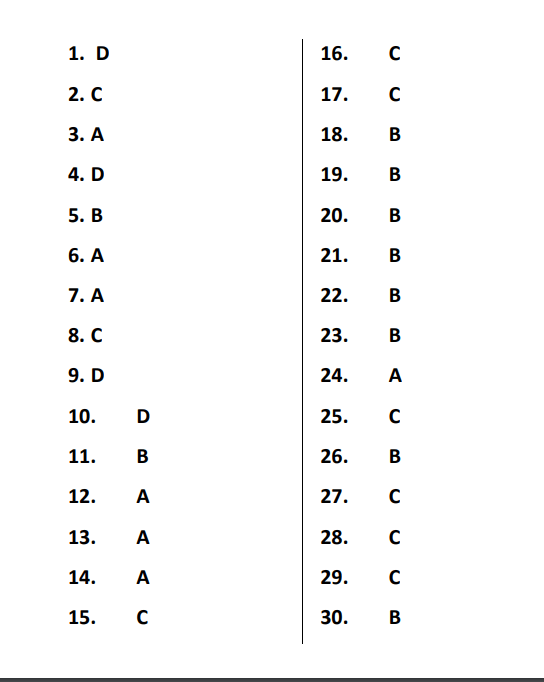
Answers To Fill In The Gap Question 31-50
- Answer: holes
- Answer: flywheel
- Answer: damage
- Answer: Lighting
- Answer: movement
- Answer: rolled
- Answer: Electrical
- Answer: digital
- Answer: 4-thread
- Answer: Inspection
- Answer: Regular
- Answer: damage
- Answer: uneven
- Answer: presser
- Answer: servicing
- Answer: professional
- Answer: lubricant
- Answer: emergency
- Answer: Durable
- Answer: decorative

